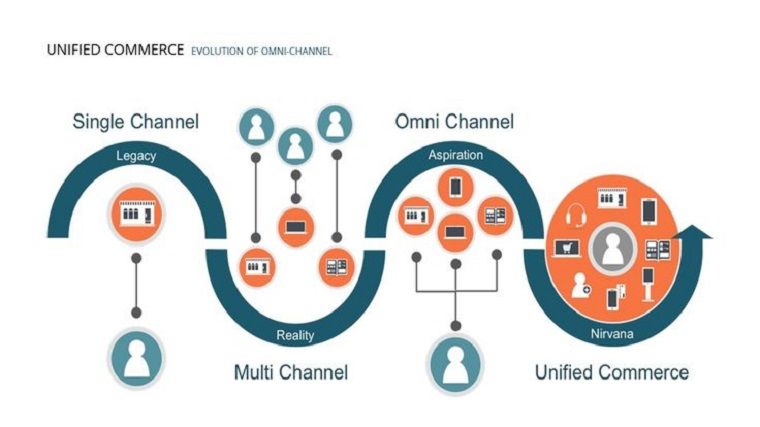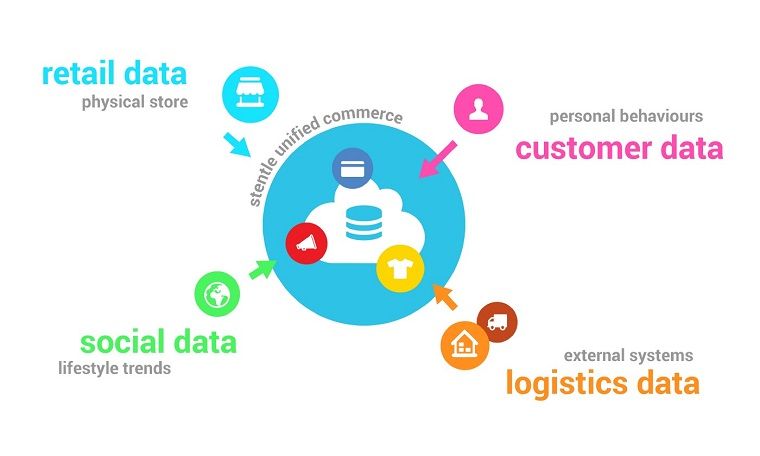Unified Commerce: What Is It and Why Is It Essential in 2022

Unified commerce (UC) is a term that is becoming increasingly popular in the business world, as it is an essential element of doing business in 2022. But what is unified commerce, and why is it so important? Let’s have a short intro to this. Simply put, unified commerce is the unification of all sales and marketing channels into a single, cohesive system.
This can include online and offline sales channels as well as traditional and modern marketing channels. By unifying these channels, businesses can create a more seamless customer experience that maximizes the effectiveness of each individual channel.
What Is Unified Commerce
There are several key benefits to unified commerce. First, it enables businesses to more effectively target customers across all channels. This allows businesses to create more opportunities to expand.
More than ever, consumers expect a seamless shopping experience across all channels. And in 2022, consumers expect these channels to serve them anytime, anywhere. To live to this day, companies need to move from multi-channel or omni-channel platforms to integrated platforms that increase engagement and drive repeat business. Retailers need the scalability and scalability that unified commerce provides to thrive after 2021.

Because the omni-channel retail environment consisted of standalone systems, omni-channel commerce was a jumble of disconnected channels and overloaded integrations. This made it difficult to provide a consistent customer experience (CX). Or get a consistent understanding (or opinion) of the customer. Conversely, unified commerce is built from scratch with the customer in mind. This enables retailers to deliver a great customer experience through a centralized platform consisting of integrated commerce solutions.
Therefore, unified commerce is not only an evolution of omni-channel retail, but also its panacea.
In unified commerce, sales channels are enhanced by a single platform that acts as an end-to-end growth engine. On their side, consumers experience seamless shopping as they move from touchpoint to touchpoint. Retailers and brands can only offer customer-first commerce through Unified.
Unified Commerce or Omni-Channel
25 years ago, the first step in an e-commerce journey was to add an online presence to complement retailers. Email and search engine marketing followed. However, retailers have realized that broader strategies are needed until mobile shopping and social media become widespread.
The concept of omni-channel shopping was born, and each digital touchpoint functions as an independent operation. Mobile apps and websites are developed separately from the major e-commerce websites. Web orders were processed from a dedicated distribution center. The IRL store competed with the e-commerce store for revenue.
The shortcomings of this strategy were already apparent before 2020. To compete with Amazon, retailers had to provide better service to their customers, regardless of where their shopping journey began or ended. However, as mentioned earlier, this has led to a decentralized mess of heterogeneous technologies. In unified commerce, touchpoints interact and interact. It's not an isolated silo. Various sales channels are supported by a single platform that acts as an end-to-end solution for all features.
This integrated platform is built on a single technology stack that handles everything from omni-channel marketing to order processing. On their side, consumers experience seamless shopping as they move from touchpoint to touchpoint. At the same time, retailers have a 360-degree view of how customers interact with the brand.
Where It Fallbacks
A unified commerce vision may seem like a lofty goal, but customer expectations are rising.
A large number of shoppers want a personalized and consistent experience at every touchpoint. In other words, we want to be able to start shopping at one touchpoint and complete the purchase at another touchpoint. And that could mean moving from online to offline. Buyers expect standardized pricing and promotions, even when navigating between touchpoints. In fact, most buyers say they are more likely to buy from a consistent brand.

Demand for these experiences increased only during the 2019-2021 era (COVID, or Pandemic Era), when online orders, curbside pickups, and contactless experiences exploded.
But so far, retailers haven't kept pace. According to a recent survey, only 28% of retailers offered the "start everywhere and end everywhere" feature through permanent carts and other features. Also, while the majority of merchants had systems in place to support consistent pricing and promotions prior to the pandemic, only 43% had optimized operations for the system to function properly.
COVID is forcing retailers to make great strides. But they had to push themselves to raise resources and budgets. Without proper investment in a unified trading platform, they will not be able to meet new challenges.
What Is a Unified Commerce Platform
The Unified Commerce Platform is a centralized platform that brings together back-end commerce solutions to form a fully integrated data model, providing a single source of truth for transactions. Leading integration platforms help break down technology barriers, keep customer data flowing in real time, and integrate your shopping journey for a better CX.
| Get Started Now to Grow Your Online Business with the Best AliExpress Dropshipping Tool - DSers! |
As we say, a unified trading platform has one order, one customer, and one user experience across all touchpoints and experiences.
However, to unlock the full potential of unified commerce, companies need a platform built on top of that. You need a fully functional trading solution that allows end-to-end visibility and control. You need commerce technology that combines features such as online sales, order management, and personalization, so that you can manage
- Your entire customer journey and access real-time customer insights from a single source of truth. Merchants can track shoppers across touchpoints and understand complex buying channels. Heterogeneous systems are now a major obstacle to unified commerce, with numerous retailers reporting struggling to track customers throughout their business.
- Deliver a brand-loyal customer experience without the burden of maintaining your technology infrastructure. With an integrated cloud platform, you can pay for web hosting, testing, and developing new features.
- IT resource bottlenecks are an obstacle to the implementation of unified commerce, and a comprehensive platform alleviates this problem. View the entire customer journey from a single management console, allowing marketers and merchandisers to make quick changes based on market conditions.
Unified Commerce Infrastructure Designed for an Organization’s Growth
The benefits of an end-to-end commerce platform aren't limited to day-to-day operations. A state-of-the-art platform built with a single codebase arms a trader with increased agility. While future changes and new features can be quickly deployed to the integrated platform, updating the daisy chain array in a standalone system can be time-consuming and costly.
Some other technical advantages for merchants are:
- Take advantage of rich features and popular third-party integrations: The integrated platform gives traders access to a professional feature set and a fast and affordable choice from a robust menu of partner integrations.
- Build extensive customizations and take advantage of direct native integration: With less development investment, merchants can customize their online shopping environment by choosing modules that work automatically.
- Maximize your technology investment with the latest scalable micro-services-based platforms: An integrated platform built for agility is an effective, future-proof organization. You can quickly add offerings and use the headless architecture to evolve your presentation layer as new touchpoints are introduced.Today
- Most of the unified commerce platforms use machine learning at their core to allow you to personalize and optimize your existing touchpoints. Or start a whole new and exciting customer experience.
Advantages of Delivering better Unified Commerce CX
In today’s world of business, providing a better customer experience than ever before leads to higher sales and loyalty. For instance, since the pandemic, KPMG has found that the best performing brands are on average 11% higher than their competitors in the customer experience rankings. Unified Commerce improves CX by meeting key expectations for relevance, accuracy, and customer service.
- End-to-end personalization allows merchants to provide a contextual experience that respects e-commerce sites and in-store interactions. Dynamically display the most relevant products and content based on location, past order history, and AI-driven personalization to help shoppers get the right products faster.
- Real-time understanding of orders and inventory is important because shoppers can navigate their shopping options and fulfillment of orders to better plan their visits. Retailers that rely on heterogeneous order management, product information, and patchwork for online systems suffer from inconsistencies and delays, which can lead to customer dissatisfaction.
- Confidence in customer service is higher than ever. More than ever, shoppers expect retailers to solve increasingly complex demands for help. According to the Harvard Business Review, in the first two weeks of the pandemic, the percentage of requests classified as "difficult" doubled to one-fifth. Customer service representatives and store clerks need company-wide insights into browsing and purchase history to ensure a satisfying interaction.
Unified Commerce Strategy for 2022
Consumer expectations are rising as retailers move through the second half of the COVID-19 crisis. Appropriate unified commerce strategies and solutions can provide the robust functionality that merchants need to meet these expectations while also providing flexible customization for the future.
The 2021 Unified Commerce Report includes conversation templates on the best ways for organizations to approach unified commerce conversations and a six-step plan to build a future-proof unified commerce strategy. It contains.
Conclusion
In a world where e-commerce is becoming more and more commonplace, it's important for businesses to have a unified commerce strategy in order to stay competitive.
Unified commerce is the combination of online and offline sales channels in order to provide a seamless customer experience. By 2022, it's expected that unified commerce will be essential for businesses, as customers will expect to be able to purchase products and services both online and in-store.












 Company
Company
 Why Choose DSers
Why Choose DSers
 Blog
Blog
 Help Center
Help Center




 Live Chat
Live Chat